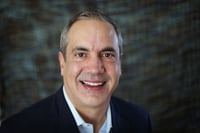Budget Makeover: 1 Simple Trick To Spend Less Money
Share this

For many people, math isn’t their favorite subject. Never mind finance and economics. So it makes sense that people don’t like budgeting. With 1 simple trick, you can get a budget makeover and save more money.
Visualize your spending
Imagine traveling on an open road, surrounded by tall trees towering over your motorcycle or RV as you pass by. Around each curve, a new image of nature flashes before your eyes. That’s easy to visualize.
While picturing that road, what did you smell? Perhaps you can smell the fresh air or the pine trees. When we engage our senses, we experience life differently.
At Open Road Wealth Management, we want you to think of your finances differently. That’s why we’re not talking about budgeting. A budget defines all of us whether we consciously crunch the numbers or passively check our bank statement.
We know how much we can spend to stay within budget and save enough money for our future and unknown expenses.
Budgets scare a lot of people. That’s why we have a new standard to measure and validate spending. Big bonus here — it doesn’t involve an Excel spreadsheet!
Just close your eyes and visualize your spending.
Remember that road trip we envisioned? Now, think about how you are going to pay for that trip.
Once you know how much the trip will cost, visualize how much value that money has in your life. For example, if that trip costs $1,000. Visualize how long it will take you to work to earn that cash to take that trip.
Maybe that trip does or doesn’t seem worth it now. Visualization is a powerful tool that can help guide financial decisions. Both long-term and short-term decisions.
Jim Carey visualized being worth millions
Even Jim Carey used visualization techniques to realize his dreams. He told Oprah he visualized earning $10 million dollars before he made it big.
At the time, he says he had nothing. He said visualizing being worth millions “made me feel better.”
It was a self-help technique. Here’s how he did it.
“I wrote myself a check for $10 million for acting services rendered and I gave myself 5 years, or 3 years maybe. I dated it Thanksgiving 1995 and I put it in my wallet it and kept it there. It deteriorated and deteriorated. Then just before Thanksgiving 1995 I found out that I was going to make $10 million on I think it was Dumb and Dumber.”
Visualization keeps you accountable, helps you reach your goals, and keeps you on budget.
How to visually spend money
To start visualizing your expenses, look at your expenses in groups. You have short-term living expenses, medium spending, and long-term financial goals. Now, let’s get to some examples.
Short-term living expenses include all your expenses you need to live. This includes things like housing and technology.
Now, let’s imagine you’re out shopping and see a nice new pair of jeans and a shirt that you want. What’s the cost to your bottom line if you spend the $200 on new clothes? Think about the value of those clothes in terms of your monthly living expenses. How many cable bills can you pay for $200?
When you visualize the impact, you may be less likely to make impulse purchases. Instead focus on what you truly need versus what you want.
Medium sized goals are expenses you know are around the corner. This might include a new car.
You can buy a new one for $40,000 or you can buy used for $25,000. A used car will save you $15,000.
When you are comparing the fresh smell of the new car to the ordinary smell of the used car you’ll probably lean toward the new car. Your senses overtake you until you start to visualize that $15,000.
How much is $15,000? Well, that might be 3 nice vacations or an entire year’s worth of mortgage payments. Which is more important? A new car, or a used car? You’ll reach your final destination in both cars. However, the used car may give you more value.
You’ll reach your final destination in both cars. However, the used car may give you more value. You’ll pay less, won’t deal with instant depreciation, and will allow you to save money so you can enjoy something else.
Now, let’s consider long-term goals. College is a good example. There are so many options for college. You can take classes online or attend a community college. There are in-state and out-of-state schools. Finally, there are public and private schools. Each has a different financial value.
For example, if your child chooses an out of state school, you’ll spend $35,000. If you go to an in-state school, you might spend $20,000. The difference is $15,000 a year. Over four years, that’s $60,000.
That’s a lot of money especially when you think about college costs in relation to your long-term goal of retiring. When you retire, $60,000 might be an entire year of income.
Visualizing expenses helps you make smarter financial decisions.
Takeaway
We all have different short and long-term financial goals. Choose one or two to focus on the next time you make a purchasing decision. Do this whether it’s a small purchase like new clothing or a large purchase like a new car.
Perhaps it’s worth spending the $250 on clothing because you also visualize how good you’re going to look in that new outfit. When you visualize something, you image all aspects of it and its impact. Either way, the amount spent has a visual value. Imagine it. Then make your decision.
This technique can be applied to all aspects of your life. For example, a life-changing moment like a divorce changes your financial plans. If you visualize your long-term expenses you will find your new financial road. Start applying visualization to your life. You’ll feel differently about finances.
Enjoy the open road!
Original article available on Open Road Wealth

About the Author: Todd Minear is a Kansas City, MO Fee-Only Financial Planner serving Kansas City in person and other geographic areas virtually. Todd specializes in retirement planning, challenging life events, and giving second opinions. He is a NAPFA-Registered Financial Advisor, XY Planning Network and Financial Planning Association member, and a CERTIFIED FINANCIAL PLANNERTM Professional working for Open Road Wealth Management.
Share this
Subscribe by email
You May Also Like
These Related Stories

A Millennial’s Guide to Budgeting for Medical Expenses

Budgeting for Coffee Sucks, Try This Instead



